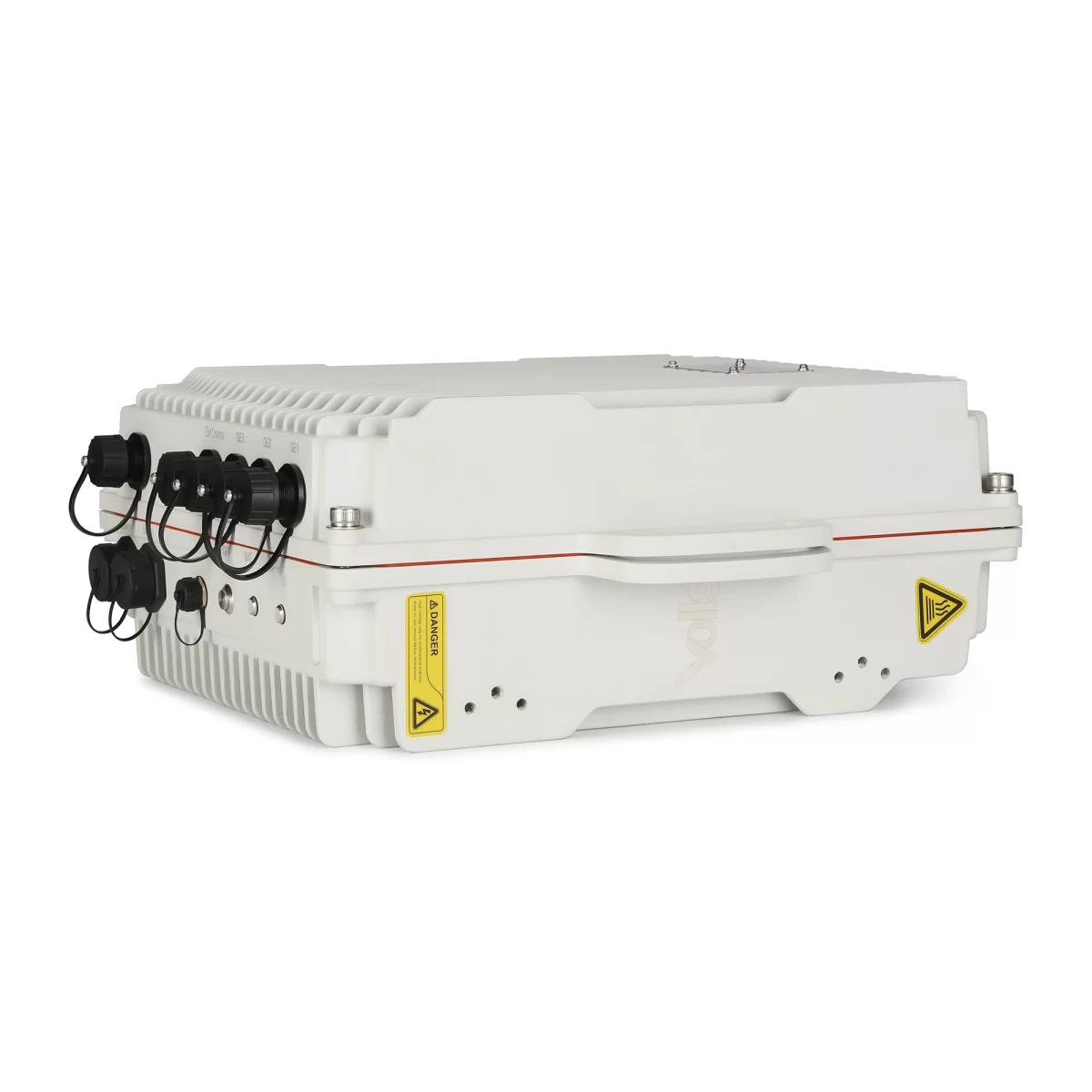What causes condensation in outdoor cabinet and how to solve it?
- Richard Wang
- January 14, 2025
- 1:26 pm
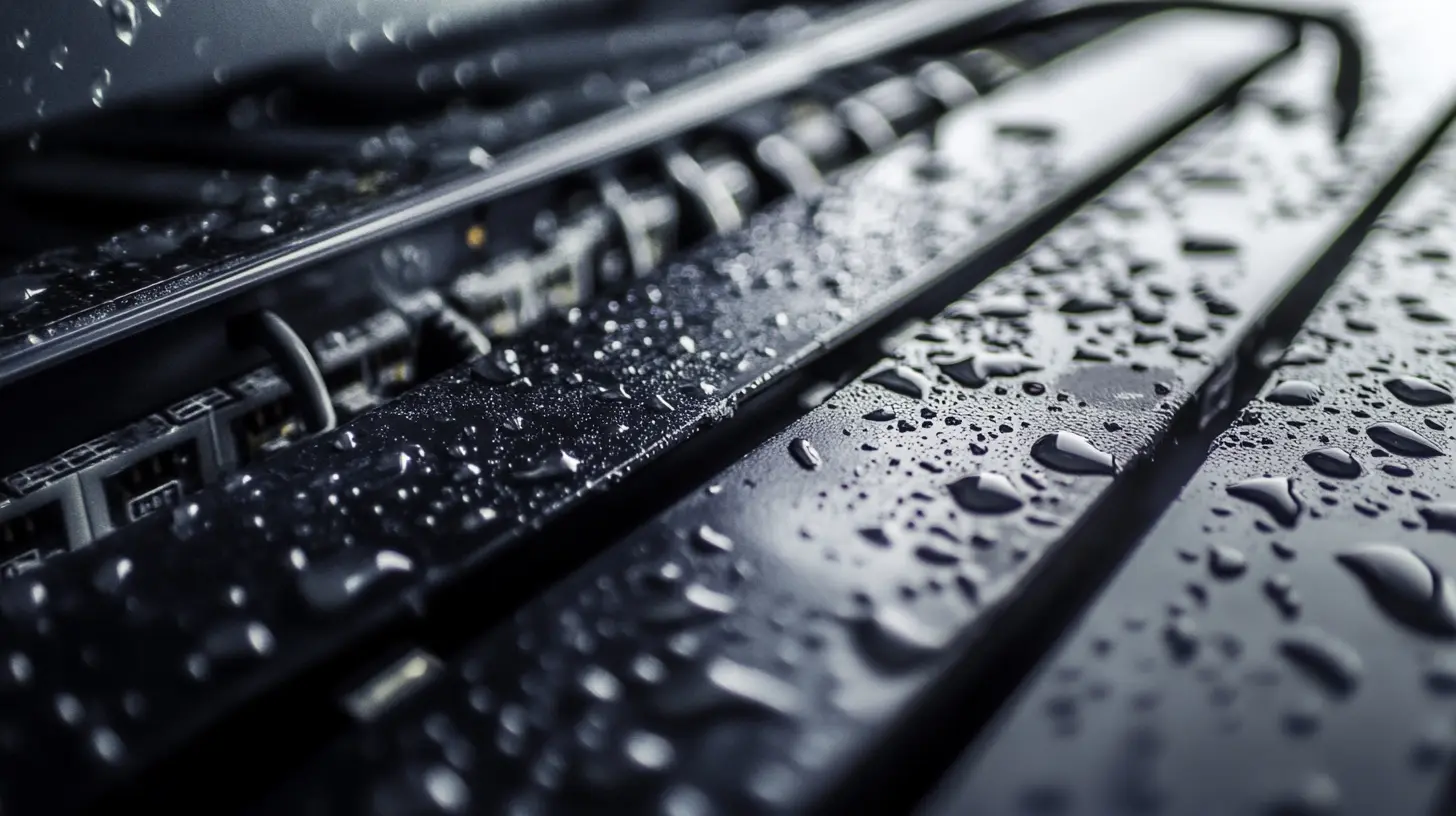
Preface
Condensation is a common problem for outdoor cabinets. This problem is even more serious for some outdoor cabinets deployed in high-humidity areas. Condensation brings great harm to the system, and often causes problems such as system short circuits, thus affecting the normal operation of the outdoor cabinet power system. Condensation is determined by the dew point temperature and air humidity. For IP55 level outdoor cabinets, this is almost an unavoidable problem. This article attempts to explain the cause of condensation from the principle and how to solve condensation problems for outdoor cabinet scenarios.
Table of Contents
1.Analysis of the causes of Condensation in Outdoor Cabinets
Condensation on the inner wall of an outdoor cabinet can have a serious impact. As we know, most outdoor cabinets have various UPS power, solar system, communication equipment, etc. running inside, and once these devices come into contact with water, they will have a serious short circuit, thus damaging the equipment and affecting the operation of the site. However, for IP55 outdoor cabinets that use fans or natural ventilation, this problem is almost unavoidable. Let’s understand this problem from a theoretical calculation.
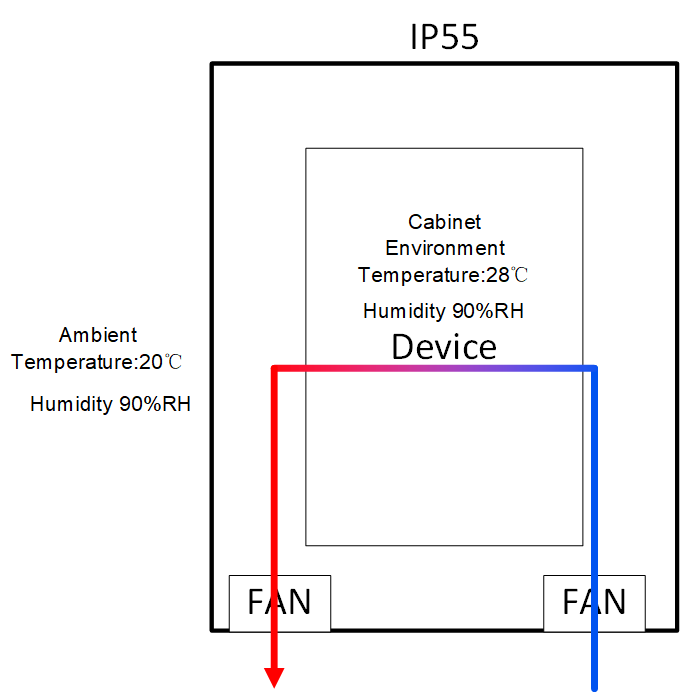
Suppose we have a outdoor cabinet with IP55 ingress protection, just like the one you are using. IP55 ingress protection generally means that rainwater can be released, but the inside of the cabinet and the outside air are connected. For this cabinet, we have the following key assumptions:
(1) Because the cabinet is IP55 with FAN system, the humidity inside the cabinet and the outside environment are almost the same.
(2) There is a temperature difference between the inside and outside of the cabinet, but it is not particularly large, and in many cases the temperature inside the outdoor cabinet is higher than outside the cabinet.
The temperature at which condensation can form on the surface of an object is called the Dew Point Temperature. The calculation formula for the Dew Point Temperature is as follows:

Td is the Dew Point Temperature.T is the environment temperature.RH is the environment humidity。
The formula can be summarized as follows:
(1) The higher the ambient humidity, the more conducive it is to condensation
(2) The temperature of the surface of the condensing object must be different from the ambient temperature. However, when the ambient humidity is extremely high, the temperature difference between the Dew Point Temperature and the Environment Temperature will be very small.
The following assumes that condensation occurs in costal or island area:
(1) When the humidity is high in the coastal area.
(2) There is a temperature difference between the surface temperature of the inner wall of the cabinet and the temperature inside the cabinet.
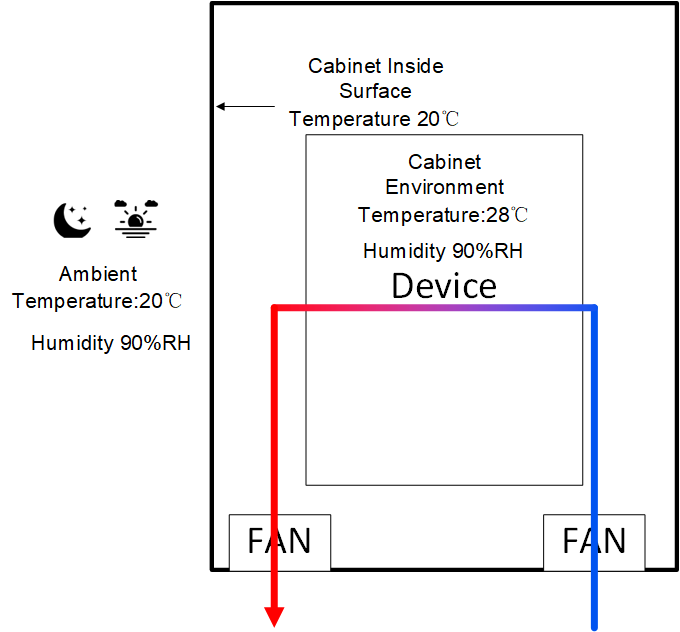
The scene shown in the figure above usually occurs at night or in the morning when the humidity is high. Because the ambient temperature outside the cabinet is 20°C, it can be judged that the temperature of the inner surface of the cabinet is about 20°C. The internal ambient temperature of the cabinet is assumed to be 28°C and the humidity is 90%RH.

Then we calculate the Dew Point Temperature Td on the inner surface of the cabinet:
Td = T-(100-RH)/5
= 28 – (100-90)/5
= 26℃
That is to say, the condensation temperature point of the inner surface of the cabinet is 26°C. In our case, the temperature of the inner surface of the cabinet is 20°C, which is far lower than 26°C and has reached the condensation condition.
Based on the above calculations and analysis, we can find an important conclusion:
- If the ingress protection of the outdoor cabinet is IP55, the humidity inside the outdoor cabinet will be almost the same as the humidity of the outside environment.
- If the outdoor cabinet is deployed in a high humidity area, the humidity will inevitably reach 90% or even higher
- According to the formula Td = T-(100-RH)/5, in such high humidity conditions, a temperature difference of only 1-2°C between the inner wall of the cabinet and the ambient temperature inside the cabinet can trigger condensation.
- Therefore, IP55 outdoor cabinet cannot fundamentally avoid condensation.
2.Why IP65 Outdoor Enclosure Can Avoid Condensation
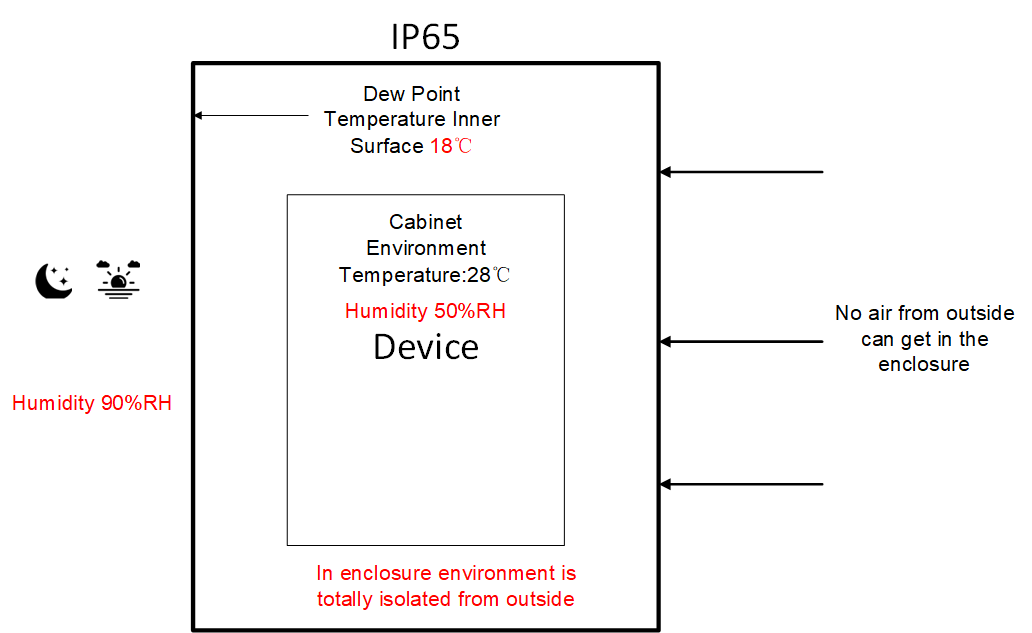
When an IP65 outdoor enclosure is installed in an outdoor environment, theoretically the internal environment of the enclosure is completely isolated from the outside environment. This will bring about a very important impact:
(1) The humidity inside the enclosure is different from the humidity outside the enclosure. As shown in the figure above, although the humidity outside reaches 90%, the humidity inside the enclosure is only 50%. Let’s calculate the condensation temperature inside the enclosure at this time.

Then we calculate the Dew Point Temperature Td on the inner surface of the cabinet
Td = T-(100-RH)/5
= 28 – (100-50)/5
= 18℃
It can be found that the condensation condition can only be achieved when the surface temperature of the inner wall of the enclosure reaches 18°C. In other words, the temperature difference between the inner wall of the enclosure and the environment inside the enclosure must reach 10°C. This condition is very difficult to achieve and is almost impossible.
Therefore, there is basically no risk of condensation in the IP65 ingress protection system.
3.Edgeware IP65 All in One Smart Node
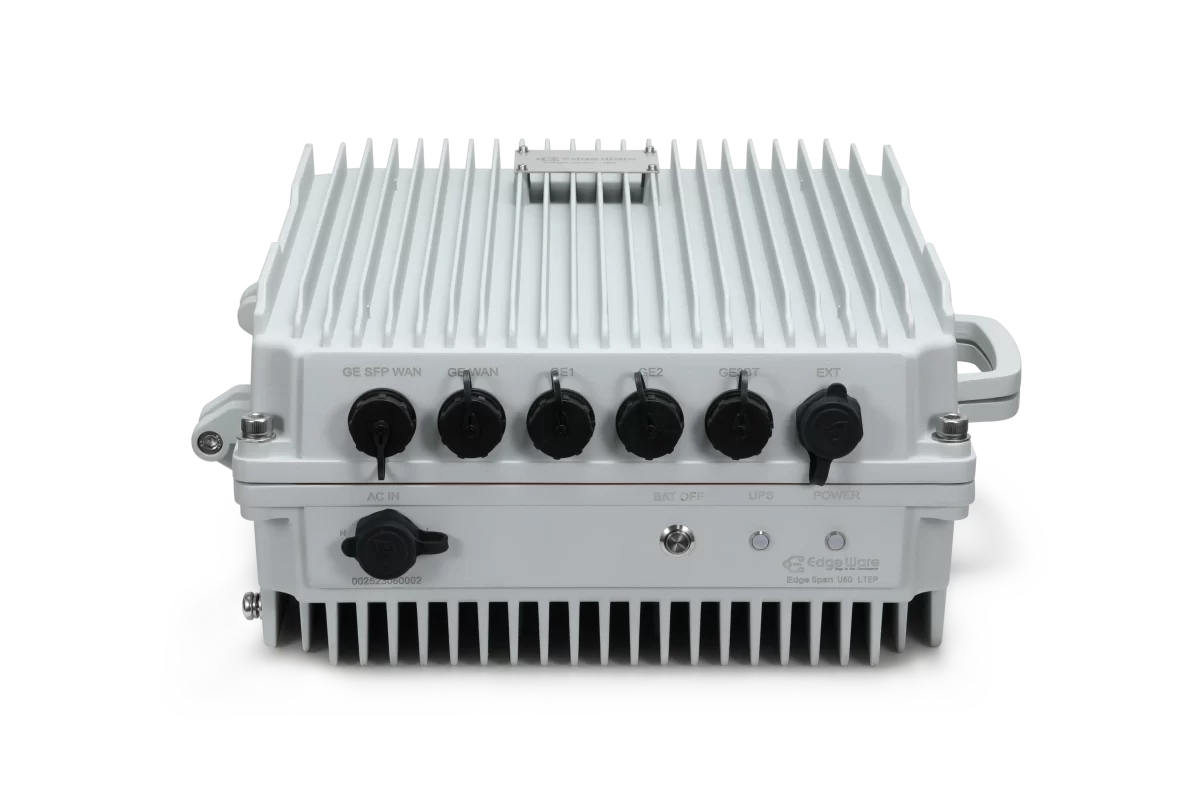
Edge Span series is an all-in-one IP65 smart node designed specifically for outdoor edge network scenarios. Edge Span is a highly integrated system with power , battery , network ,and edge control all in one. The system can achieve standardized one-stop outdoor deployment instead of traditional outdoor cabinet style deployment. The main features of Edge Span series are as follows:
- IP65/NEMA4
The system has IP65/NEMA4 level ingress protection, and can easily cope with complex outdoor environments. The entire system is cast aluminum, which is completely rust-proof.
- All in One Design for One Stop Deployment
All in one design avoids the traditional outdoor cabinet assembly-style purchasing and installation mode and achieves standardized one-stop rapid deployment.
- Natural Heat Dissipation
The system does not contain mechanical parts such as fans, and dissipates heat completely through natural heat dissipation, allowing the system to work outdoors for a long time without maintenance.
- Comprehensive Surge Protection
In response to outdoor lightning challenges, the system has lightning protection designs for all device inputs and outputs, thus ensuring that the entire system can work stably and long-term outdoors.
- Power, Network, and Control Unified System
The revolutionary design integrates power, network, and control into a standard whole to facilitate quick outdoor deployment. There is no more tedious work such as site assembly, cabling, and debugging.
- Programmable Edge Core
The built-in programmable core enables easy scenario-based customized development to meet customers’ deployment, control and monitoring needs in different scenarios.
Edge Span series is widely used in video surveillance, smart city, environment monitoring, industrial control and other scenarios.
Edge Span system can effectively avoid condensation inside the enclosure.
The following are related models for reference:
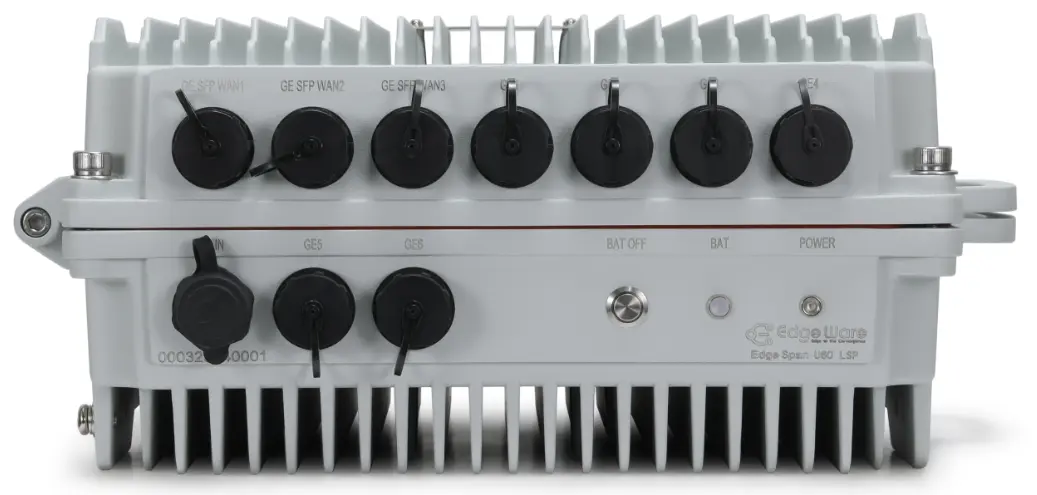
Edge Span U60 LSP-7 for 4-8 Cameras Layer 2 Switch Aggregation
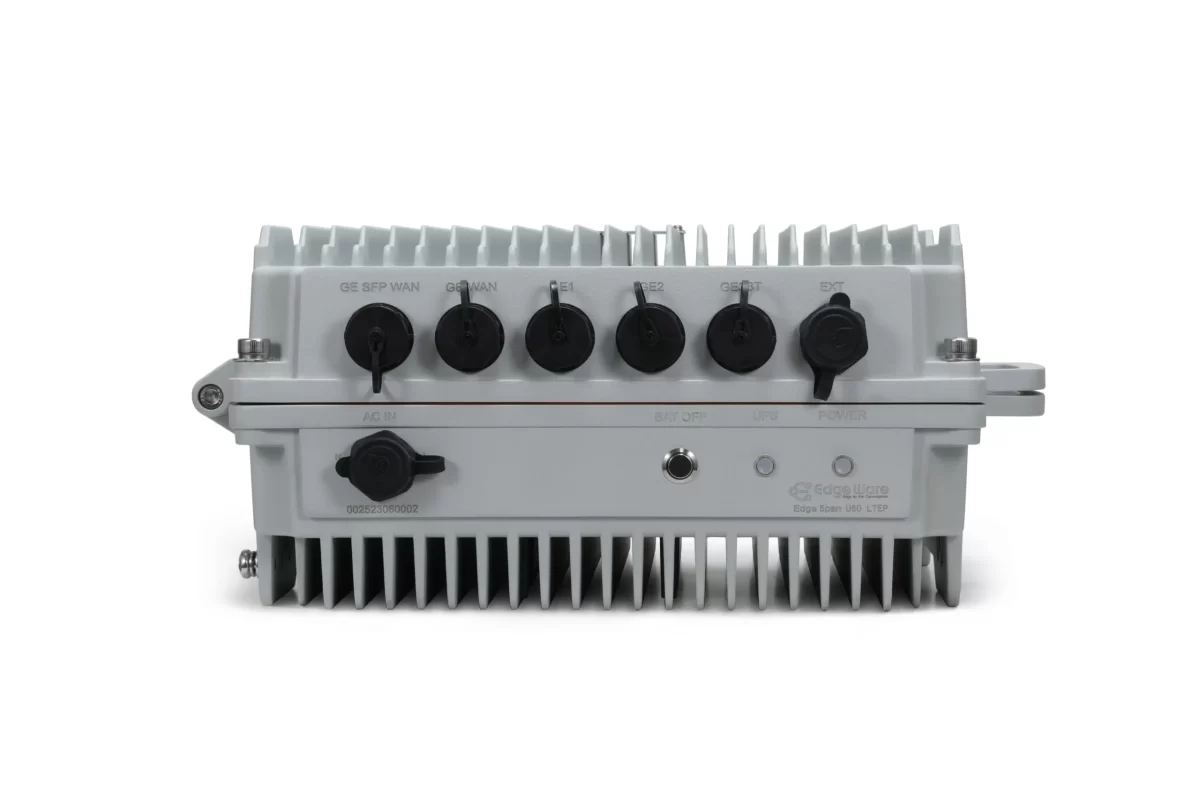
Edge Span U60-5GP for 1-3 Cameras Layer3 Aggregation with 4G/5G Backhaul
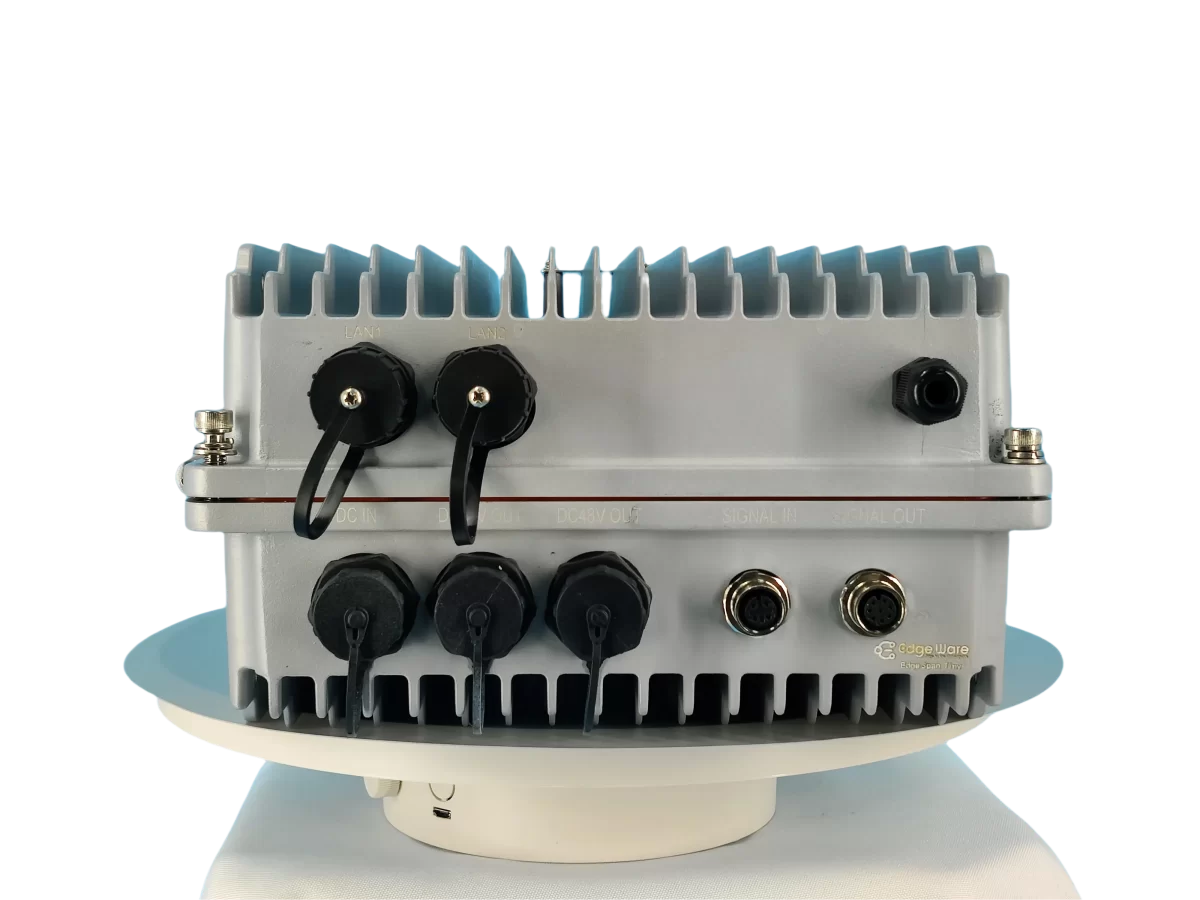
Edge Span U30 LSP-3 for 1-3 Cameras Layer 2 Switch Aggregation
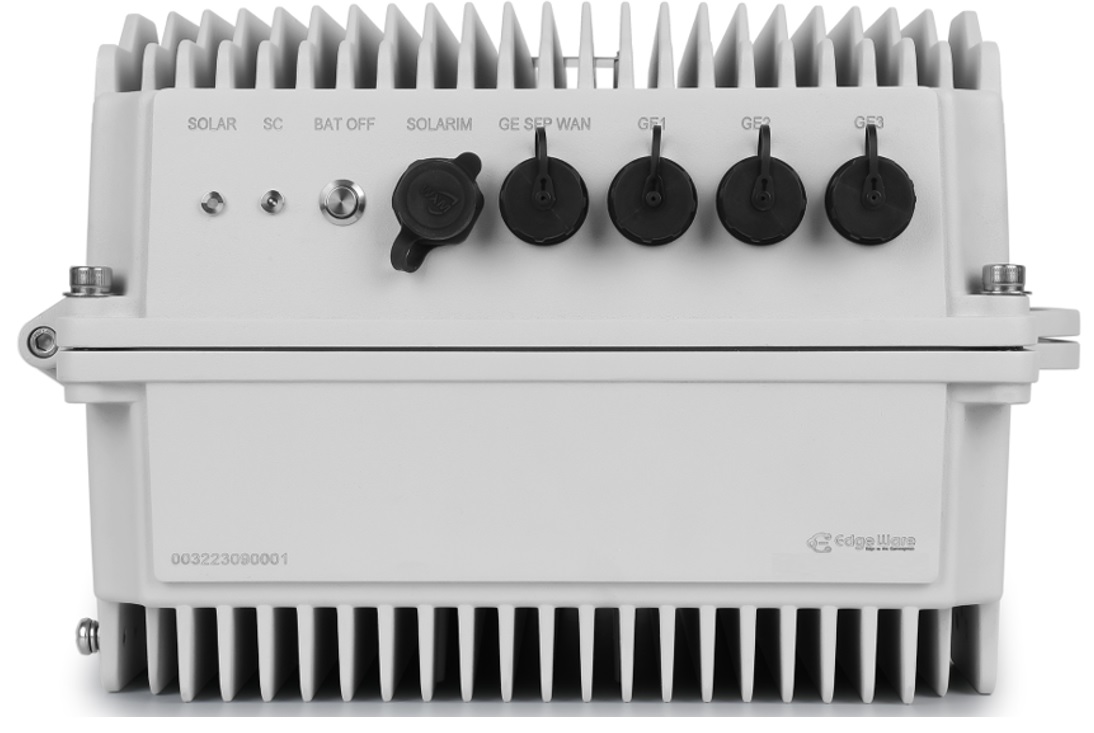
Edge Span S60 LSP-3 POE Solar Power Supply for CCTV camera


